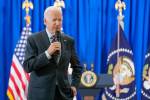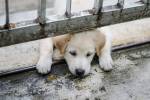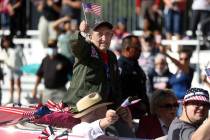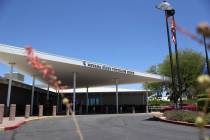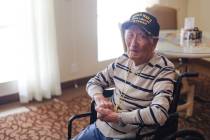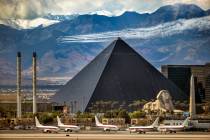Veterans reflect on ‘longest day’

Larry Bauer summed up the D-Day landings at Omaha Beach in one word: "Nasty."
The 87-year-old Las Vegas man was a young soldier in the 1st Infantry Division on June 6, 1944.
"We bobbed around in the (English) Channel and then made a hard right," he recalled about his landing craft before the start of the Welcome Home Celebration on Wednesday at the Suncoast.
He remembered the silence before the assault.
"There was a lack of noise, then it started again. This time it was the Germans shooting at us."
His division, known as the "Big Red One," was coincidentally the same color designation for his unit’s landing destination among the red, white and blue groups.
"I was with red, the western-most landing spot," he said, describing his location on the 4½-mile-wide, crescent-shaped beach at the foot of bluffs controlled by German soldiers. He realized from the start this wasn’t going to be a cakewalk.
An 88 mm artillery shell hit the boat, and of the 43 on board, only Bauer and five others survived. After the dash to the beach, he encountered a hail of bullets from small arms and automatic weapons. Although wounded, again he survived because, he said, of "a lot of luck and putting the buttons on my shirt to the dirt."
He only spent 20 minutes on the beach before he was hit three times, suffering wounds from a pistol round to his leg, one from a Mauser rifle to his groin and shrapnel from a grenade that hit his pack and pierced the middle of his back.
He was later rescued and sent to a hospital ship. "They wanted my Tommy gun, and I wouldn’t give it to them," he said about the Thompson submachine gun he carried into battle.
Bauer and Chuck Moyer, 87, of Henderson were two soldiers involved in the landings who were among 30 World War II veterans recognized by Veterans Affairs officials and service groups at the Welcome Home event for all generations of veterans.
But "the greatest generation" developed its reputation 68 years ago Wednesday. That’s when the Allied Expeditionary Force under Gen. Dwight D. Eisenhower launched the invasion of Normandy, France, to liberate Europe from the grip of German dictator Adolf Hitler.
The June 6, 1944, invasion, which became known as D-Day for the military term denoting the "day" of the attack, had been planned under the code name Operation Overlord. It went down as the biggest invasion in history and a turning point in World War II that led to the defeat of Hitler’s Nazi forces.
In all, about 2.7 million Allied troops gathered in southern England for the assault.
The 150,000 who participated in the Normandy landings – code-named Operation Neptune – crossed the English Channel on board some 5,000 vessels that carried 30,000 vehicles to the beaches. The ships and boats made the largest armada ever assembled.
In the air, more than 300 aircraft dropped 13,000 bombs to clear the French coast for the invasion. Hundreds more fighter planes were involved in escorts and attacks.
Spearheading the assault were more than 800 transport planes, some towing gliders, that delivered six parachute regiments totaling some 13,000 paratroopers.
By the end of what’s known as "the longest day," about 10,000 Allied troops had been killed or wounded.
Moyer, an infantry rifleman, endured the landing with the 79th Infantry Division at Utah Beach in the "second or third wave," he said. "There wasn’t as much chaos there as there was at Omaha," he said.
His unit’s first target was Sainte-Mere-Eglise, where soldiers from the 82nd Airborne Division were surrounded. Then they fought through the hedgerows and on to Cherbourg, where his division captured 5,000 Germans who became prisoners of war.
The 79th continued to fight to the Rhine River, where Moyer was wounded.
"Five of us went into a house that was booby-trapped, and four were killed," he said, recalling how medics picked him up in a "weasel," a vehicle that could cross land or water.
He was taken to a hospital in the Netherlands until Nazi artillery pummeled the area. Then he was put on a hospital train that took him to Sisson, France. During the trip, however, gangrene set in, and he had to have five operations to remove it.
"I was a Guinea pig for penicillin, but it saved my legs and my life," he said.
For Bauer, D-Day is "a bad memory."
For Moyer, D-Day "means freedom and many lives lost."
Contact reporter Keith Rogers at krogers@reviewjournal.com or 702-383-0308.





